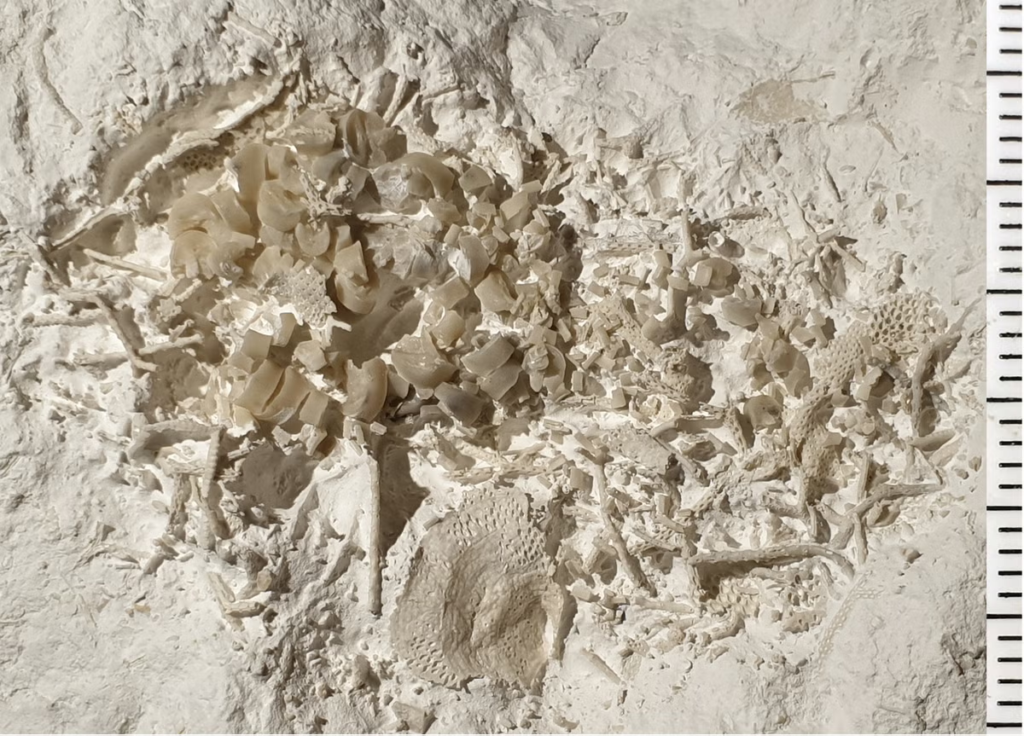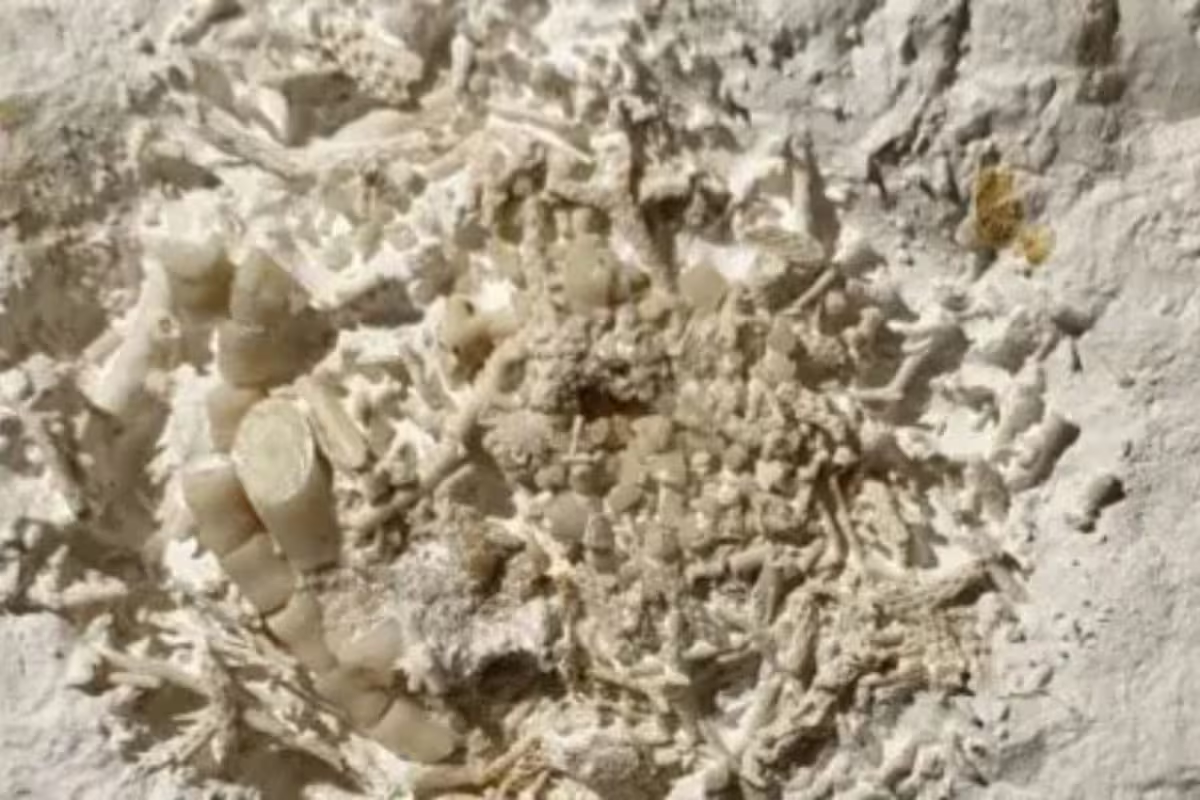A remarkable discovery in Denmark has provided a fascinating glimpse into life on Earth 66 million years ago during the Cretaceous period. A local fossil hunter stumbled upon a piece of ancient Fish Vomit from Dinosaur Era Found in Denmark at the Cliffs of Stevns, a UNESCO World Heritage site near Copenhagen.
The find, which contains remnants of sea lilies, has captured the attention of paleontologists and researchers, offering new insights into prehistoric food chains and ecosystems.
A Chance Discovery at the Cliffs of Stevns
Peter Bennicke, an amateur fossil hunter, made this extraordinary discovery during a walk along the Cliffs of Stevns. Known for its rich deposits of fossils from the Cretaceous period, the area is a treasure trove for researchers and enthusiasts alike. Bennicke noticed unusual fragments embedded in chalk and decided to take them to the Museum of East Zealand for further examination.
What initially appeared to be ordinary fragments turned out to be pieces of sea lily—a marine animal related to starfish and sea urchins. Upon closer inspection, experts identified the fragments as fossilized fish vomit, dating back 66 million years to the time when dinosaurs such as Tyrannosaurus and Triceratops roamed the planet.
Read : Whale Vomit Worth ₹ 6.20 Crore Seized by Thane Police
The vomit is composed of skeletal remains from at least two species of sea lily, which were likely consumed by a fish that regurgitated the indigestible parts. This discovery, while seemingly peculiar, sheds light on the dietary habits of ancient marine creatures and their role in the food web of the Cretaceous seas.
Understanding Prehistoric Ecosystems
The discovery of fossilized vomit may seem unusual, but it plays a crucial role in reconstructing ancient ecosystems. According to paleontologists, such findings provide direct evidence of predator-prey relationships and dietary habits in prehistoric times.
Sea lilies, the primary content of the fish vomit, are not known for their nutritional value. They consist mainly of calcareous plates and soft parts, which made them a less-than-ideal meal for most predators. Yet, this find demonstrates that some marine animals did consume them, possibly out of necessity or a lack of better food options.
Read : Horrifying Video Shows Seawater Turning Red as Shark Attacks Four People at South Padre Island in US
Jesper Milan, a paleontologist at the Museum of East Zealand, emphasized the significance of the discovery. He explained that analyzing such fossils helps scientists understand how organisms interacted within the food chain.

“Here is an animal, probably some kind of fish, that 66 million years ago ate sea lilies that lived at the bottom of the Cretaceous sea and regurgitated the skeletal parts,” Milan explained.
The preserved vomit provides a snapshot of life in the Cretaceous seas, revealing details about predator-prey dynamics and the survival strategies of marine creatures. It also highlights the complexity of ancient food webs, where even less nutritious organisms like sea lilies played a role in sustaining marine life.
Linking Fossil Discoveries to the Bigger Picture
This discovery is not an isolated case. Fossilized vomit and droppings have been invaluable to paleontologists in understanding prehistoric ecosystems. Last year, a study published in Nature magazine examined 200-million-year-old samples of vomit and feces, revealing intricate details about ancient diets.
These samples contained fragments of bones, teeth, fish scales, plants, and even beetles, offering a comprehensive view of what prehistoric animals consumed. Researchers found that such fossils were crucial in piecing together how certain species thrived and dominated their ecosystems.

Martin Qvarnström, a paleontologist at Uppsala University in Sweden and co-author of the study, highlighted the importance of these findings. “The most surprising aspect was discovering how well-preserved and diverse the food remains inside the fossilized droppings and vomits,” he said in an interview with Popular Science.
The discovery of fish vomit at the Cliffs of Stevns is a continuation of this trend, demonstrating the richness of information that can be gleaned from even the most unexpected fossils. It underscores the importance of preserving fossil-rich sites like Stevns and encourages further exploration to uncover hidden stories of Earth’s ancient past.
The 66-million-year-old fish vomit discovered in Denmark is more than just an unusual find—it is a window into the past. It provides valuable insights into the diets, behaviors, and survival strategies of prehistoric marine animals.
Moreover, it highlights the intricate relationships within ancient ecosystems, reminding us of the delicate balance that has always existed in nature.
As researchers continue to analyze this remarkable discovery, it serves as a reminder of the importance of fossil hunting and preservation. Each find, no matter how small or strange, adds a piece to the puzzle of Earth’s history, helping us better understand the world we live in today.

